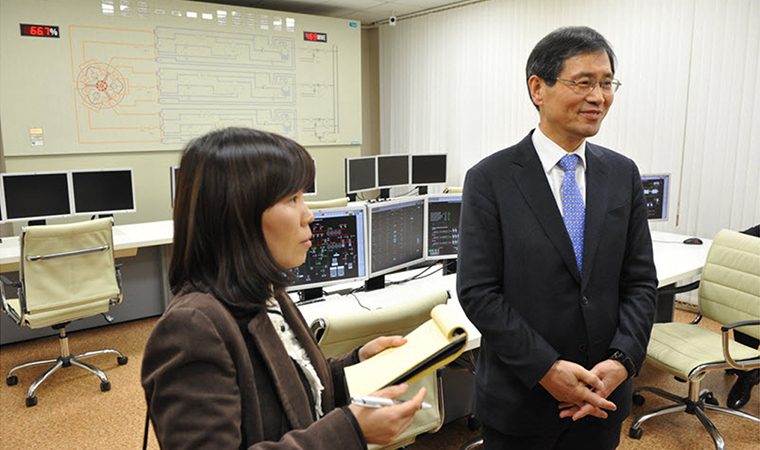
South Korea seeking Russian expertise
back to contentsSouth Korea has its own fast breeder reactor development program. The first attempt at designing a fast reactor KALIMER was made in the late 90s. Drawing on the expertise acquired, a new program was launched in 2012, aiming at the development and construction of a 150 MWe PGSFR-based pilot reactor unit by 2028.
Many design solutions developed in South Korea are similar to those used in Russian-designed BN reactors, including an integrated reactor layout, main and safety vessels, and an intermediary heat exchange loop between the reactor and the steam turbine loop. Safety systems use the latest technology solutions – as in the modernized BN-600 and new BN-800 fast reactors, the South Korean design provides for passive heat removal with an air heat exchanger.
Since Asia Pacific is a high seismic area, the upper foundation slab of the reactor building is placed on high damping rubber bearings while the reactor containment is partly buried (10 meters down) and surrounded by a cylindrical support wall. An auxiliary infrastructure building will be placed around the reactor building, with the lower foundation slab being common for the both. To control the reactor systems submerged in molten sodium, Korean engineers are developing an ultrasonic waveguide sensor. Steam generator piping will be controlled with eddy current and magnetic sensors capable of timely detecting pipe wall thinning, corrosion and cracks. Future system parameters are modeled and assessed with STELLA software, for which purpose a sodium test loop was built on the site.
Apart from the Ambassador, the Korean delegation included Park Won-Seok, Director of South Korea’s Sodium Fast Reactor Development Agency, other embassy officers and nuclear engineers. The delegates had a meeting with the management of Beloyarsk NPP and visited a BN-600 control room simulator.
“South Korea and Russia are developed nuclear energy powers, and we need to cooperate closely for the development of next generation nuclear power stations. Russia has solid expertise and established infrastructure in the fast reactor field. This is why I would like to see the cooperation continuing between our countries,” Pak Ro Byok said.
Rosatom’s Leipunsky Institute of Physics and Power Engineering is already engaged in the development of PGSFR fuel. Pilot fuel assemblies for the Korean fast reactor will be tested in the BOR-60 fast breeder reactor at the Research Institute of Atomic Reactors in Dimitrovgrad.




